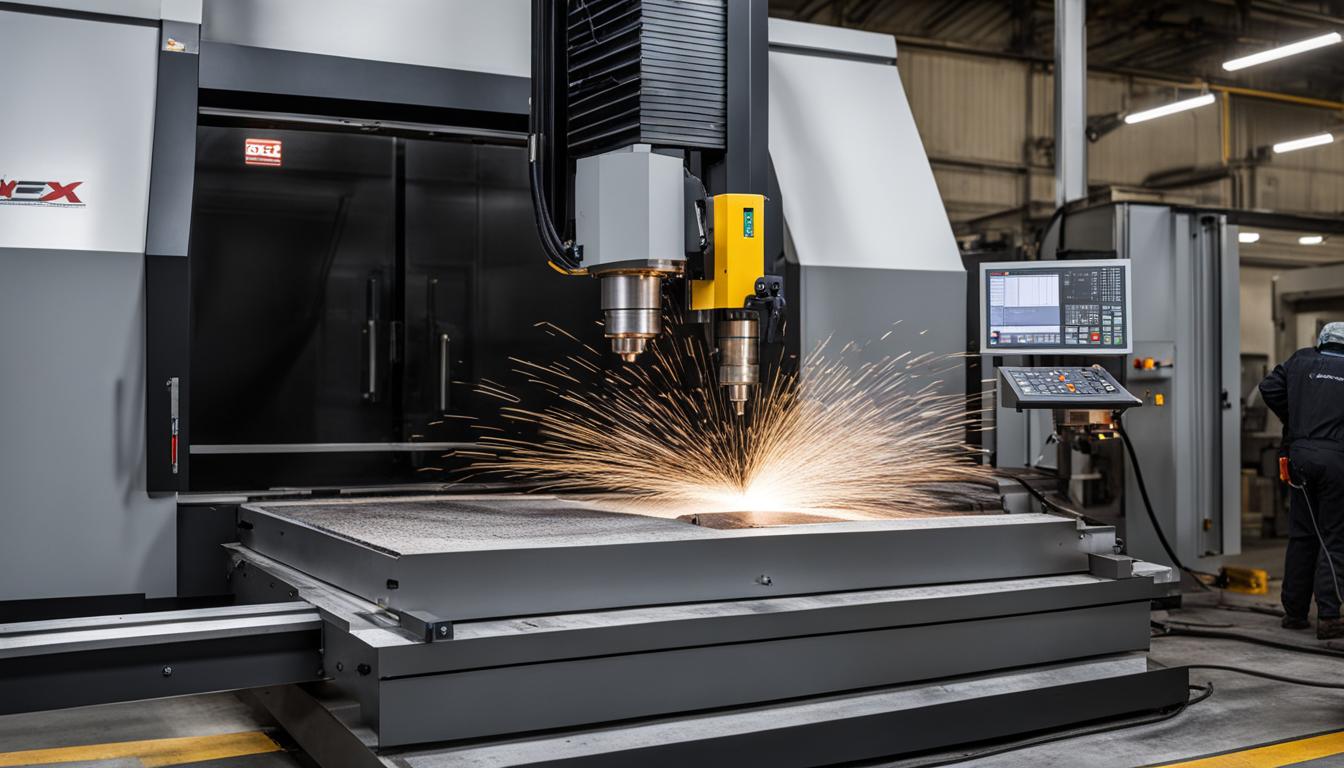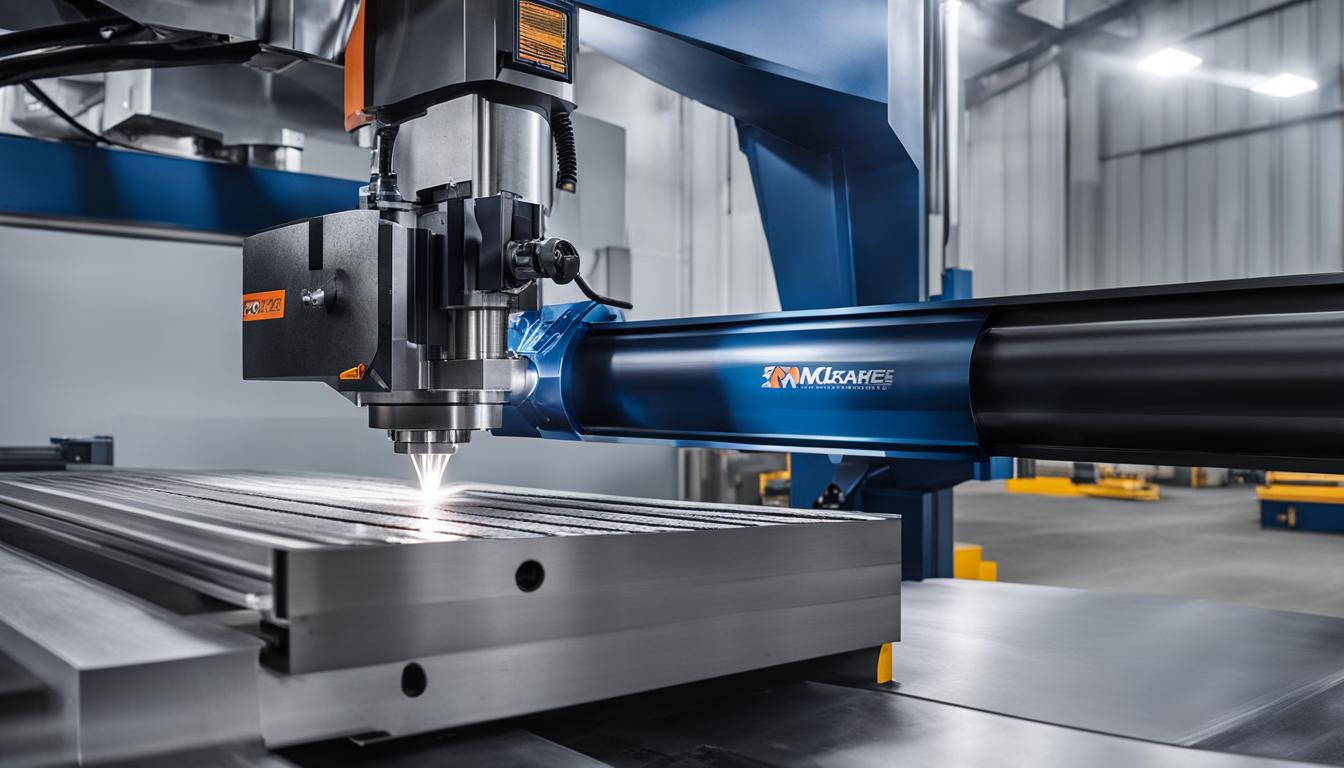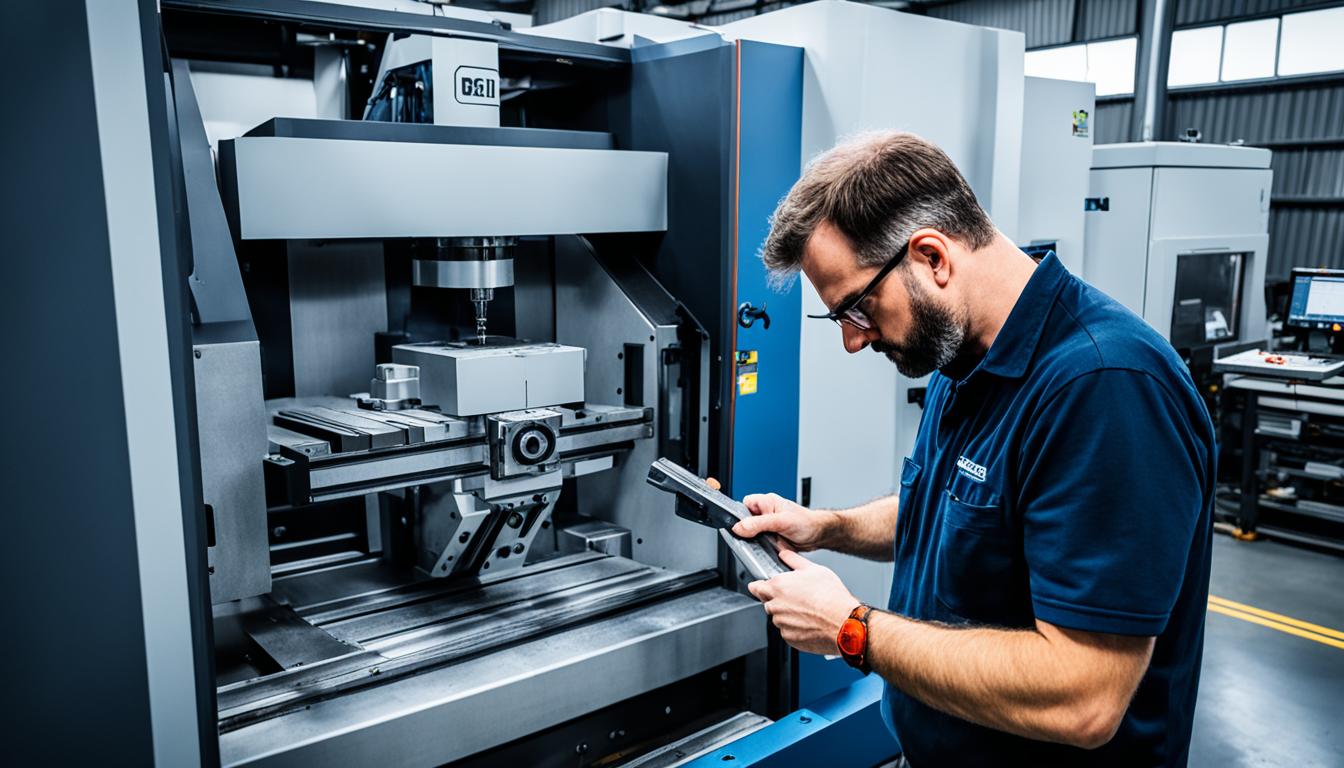CNC routers can indeed cut steel, but their capabilities depend on several factors. Most standard CNC routers are designed for softer materials like wood, plastic, and aluminum, making steel cutting challenging. However, specialized CNC routers equipped with appropriate tooling and sufficient power can effectively cut steel. These machines typically require high-speed spindles, robust frames to minimize vibration, and specialized cutting tools such as carbide or diamond-tipped bits.
The type of steel being cut also matters; mild steel is easier to work with than hardened steel. When cutting steel, CNC routers often employ techniques like slower feed rates, multiple passes, and proper cooling to manage heat buildup and maintain precision. While CNC routers can handle steel, for heavy-duty or high-volume steel cutting, dedicated CNC milling machines or plasma cutters are generally more efficient and cost-effective options.
Users should carefully consider their specific needs, the thickness of the steel, and the desired finish quality when deciding whether a CNC router is suitable for their steel-cutting projects.
- 3-axis machines are suitable for 2D and 2.5D geometry, while 4-axis machines can machine 4 sides of a part in a single setup.
- 5-axis machines offer the highest level of flexibility and can handle intricate 3D shapes and curves without the need for multiple setups.
- When choosing between these machines, factors such as part complexity, precision requirements, budget, and production volume should be considered.
- Each type of machine has its own advantages and disadvantages, with 3-axis machines being cheaper and easier to use, while 5-axis machines offer the highest level of complexity and customization options.
- Knowing when to use each type of machine is crucial for optimizing manufacturing processes and achieving desired outcomes.
3-Axis Machining
In the world of CNC machining, 3-axis machining is the simplest and most widely used form of precision manufacturing. This process involves fixing the workpiece in a stationary position while the cutting tool moves along the X, Y, and Z linear directions.
3-axis machining is best suited for creating 2D and 2.5D geometries, where the part requires machining on all six sides. However, it’s important to note that each side of the part will require a new fixture setup, which can add to the overall cost and time of production.
Some of the key features and limitations of 3-axis machining include:
- Machining all 6 sides of the part
- Best suited for 2D and 2.5D geometries
- Requires new fixture setup for each side
- Undercut features possible with specific cutters
- Cannot machine certain angled features
To better understand the capabilities of 3-axis machining, let’s take a closer look at its application in the production of a custom-made mechanical part.
| Feature | Description |
|---|---|
| Material | Aluminum alloy |
| Dimensions | 100mm x 100mm x 50mm |
| Geometry | 2.5D shape with pockets and holes |
| Complexity | Low |
| Number of setups | Six (one for each side) |
| Tooling time | 1 hour per setup |
| Total machining time | 6 hours |
As shown in the table above, 3-axis machining is a feasible option for this particular part, given its low complexity and simple 2.5D geometry. However, it’s important to consider the limitations of 3-axis machines when dealing with more complex designs or parts with intricate angled features.
In the next section, we will explore the advantages and capabilities of 4-axis machining, which offers enhanced functionality compared to its 3-axis counterpart.
4-Axis Machining
4-axis machining is a significant advancement in the world of CNC machines. This technique involves the addition of a rotation axis, typically the A-axis, to the three linear axes (X, Y, and Z) of a CNC machine. This additional axis allows the workpiece to rotate, enabling machining on four sides in a single setup. As a result, 4-axis CNC machines offer several advantages over their 3-axis counterparts.
Advantages of 4-Axis CNC Machines
- Reduced setup time: By enabling the machining of four sides in one setup, 4-axis machines eliminate the need for multiple setups. This not only saves time but also minimizes the risk of human error associated with fixture changes.
- Machining of angled features: 4-axis machining allows for the machining of angled features, which is not possible with traditional 3-axis machines. This capability opens up new possibilities for creating complex profiles and geometries, such as cam lobes and inclined surfaces.
- Economical for certain features: Compared to 3-axis machining, 4-axis machining is more cost-effective for certain features. The ability to machine multiple sides in a single setup reduces labor and tooling costs, making it a preferred choice for specific applications.
Features of 4-Axis CNC Machines
Apart from the advantages mentioned above, 4-axis CNC machines possess several features that make them highly versatile and efficient:
- Indexing: This type of 4-axis machining involves rotating the workpiece to a fixed angle, machining the desired features, and then indexing to a new angle for further machining. It is suitable for applications that require machining at specific angles.
- Continuous: Continuous 4-axis machining allows for simultaneous cutting and rotation of the workpiece. This feature is especially useful for creating smooth contours, curved surfaces, and intricate designs.
Overall, 4-axis CNC machines provide a valuable middle ground between the simplicity of 3-axis machines and the complexity of 5-axis machines. With their ability to streamline operations, machine angled features, and reduce costs, they have become an essential tool in various industries, including aerospace, automotive, and manufacturing.
5-Axis Machining
5-axis machining is a highly advanced and versatile process that offers numerous advantages for precision manufacturing. Unlike 3-axis and 4-axis machines, which are limited to linear movements along the X, Y, and Z axes, 5-axis machines can rotate along two additional axes, allowing for greater freedom and flexibility in machining complex geometries.
Advantages of 5-Axis CNC Machines
- Enhanced Precision: The ability to rotate the workpiece or spindle in multiple directions enables 5-axis machines to reach challenging angles and achieve higher precision in machining intricate details.
- Improved Efficiency: 5-axis machines can complete complex machining operations in a single setup, eliminating the need for multiple fixtures and reducing production time and costs.
- Expanded Capabilities: With the ability to simultaneously rotate two axes while cutting, 5-axis machines can create complex curves, arcs, and 3D surfaces, making them ideal for manufacturing parts with intricate designs.
- Reduced Setup Time: By eliminating the need for multiple setups, 5-axis machining significantly reduces setup time, enabling manufacturers to improve productivity and meet tight production deadlines.
- High Flexibility: 5-axis machines can easily handle features on different sides of the part without requiring repositioning, allowing for the machining of complex shapes and contours with seamless transitions.
To visualize the advantages and features of 5-axis CNC machines, refer to the table below:
| Advantages | Features |
|---|---|
| Enhanced Precision | – Simultaneous rotation of two axes |
| Improved Efficiency | – Single setup for complex machining operations |
| Expanded Capabilities | – Machining of complex curves, arcs, and 3D surfaces |
| Reduced Setup Time | – Elimination of multiple setups |
| High Flexibility | – Machining of features on different sides without repositioning |
With these advanced capabilities, 5-axis machining is widely used in industries such as aerospace, automotive, medical, and moldmaking, where complex and intricately designed components are required.

By harnessing the advantages of 5-axis CNC machines, manufacturers can achieve unparalleled precision and efficiency while expanding their design possibilities. Whether it’s creating complex shapes, reducing setup time, or improving productivity, 5-axis machining offers a competitive edge in today’s highly demanding manufacturing landscape.
Choosing Between 3-Axis, 4-Axis, and 5-Axis Machines
When it comes to selecting the right CNC machine for your manufacturing needs, it’s important to consider various factors. The complexity of the part’s geometry, the need for multiple setups, the required precision, the budget, and the volume of production all play a significant role in the decision-making process.
If you’re dealing with simple geometries, have a limited budget, and lower production volumes, a 3-axis machine may be the most suitable choice. These machines can effectively machine all 6 sides of a part but require a new fixture setup for each side, which can be costly.
On the other hand, if you require the ability to machine angled features and want to reduce setup time, a 4-axis machine strikes a good balance between cost and capability. With an additional rotation axis, 4-axis machines can machine 4 sides of a part in a single setup, offering improved precision and cost-effectiveness for certain features.
For complex shapes and high production volumes, 5-axis machines are the ideal option. These machines have two additional rotary axes, allowing them to machine intricate 3D shapes and curves without the need for multiple setups. However, it’s important to note that 5-axis machines come with higher costs and require skilled operators.
To help you visualize the differences between these machine types, here’s a comparison table:
| Machine Type | Complexity of Geometry | Required Precision | Budget | Setup Complexity | Volume of Production | Operator Skill Level |
|---|---|---|---|---|---|---|
| 3-Axis | Simple | Lower | Limited | High | Low | Low |
| 4-Axis | Medium | Moderate | Moderate | Moderate | Moderate | Moderate |
| 5-Axis | Complex | High | High | Low | High | High |
Advantages and Disadvantages
Each type of CNC machine offers unique advantages and disadvantages. Understanding these can help you determine which machine is best suited for your specific manufacturing needs.
Advantages of 3-Axis CNC Machines
- Cost-effective: 3-axis machines are generally cheaper compared to their counterparts.
- Easy to use: These machines have simpler programming requirements, making them user-friendly.
- Accessibility: 3-axis machines are widely available and commonly used, resulting in easier maintenance.
Advantages of 4-Axis CNC Machines
- Multi-side machining: With an additional rotation axis, 4-axis machines can machine multiple sides of a part in a single setup.
- Precision: These machines offer higher precision, ensuring accurate and consistent results.
- Reduced costs: By minimizing the need for multiple setups, 4-axis machines can lower production costs, especially for larger volumes.
- Angled feature handling: 4-axis machines can handle angled features, allowing for more versatile machining capabilities.
Advantages of 5-Axis CNC Machines
- Complexity and customization: 5-axis machines provide the highest level of complexity, allowing for the machining of highly intricate 3D shapes and curves.
- Precision: These machines offer exceptional precision, ensuring the production of high-quality and detailed parts.
- Reduced setups: By eliminating the need for multiple setups, 5-axis machines save time and increase efficiency.
- High production volume: With their advanced capabilities, 5-axis machines are ideal for handling high-volume production.

It’s worth noting that each type of machine also has its own disadvantages. For example, 3-axis machines have limitations in terms of part complexity and require more setups for machining all sides. 4-axis machines, although versatile, still require setups for different angles. 5-axis machines, while offering extensive capabilities, come with higher costs and require skilled operators and complex programming.
In the next section, we will discuss when to use each type of CNC machine, taking into consideration various factors such as budget, production volume, and part complexity.
When to Use Each Type of Machine
Knowing when to use each type of CNC machine is essential for optimizing your manufacturing processes. Let’s take a look at the scenarios where each type of machine shines:
3-Axis CNC Machines
When to use 3-axis CNC machines:
- Lower budgets: 3-axis machines are generally more affordable compared to their 4-axis and 5-axis counterparts, making them ideal for businesses with limited financial resources.
- Low production volumes: If you’re dealing with smaller production runs, a 3-axis machine can be a cost-effective choice.
- Simpler geometries: 3-axis machines excel at machining 2D and 2.5D geometries and can handle parts with relatively straightforward shapes.
4-Axis CNC Machines
When to use 4-axis CNC machines:
- Curved surface features: If your parts require machining on curved surfaces, a 4-axis machine offers the rotational capability to achieve those intricate details.
- High tolerances: 4-axis machines provide enhanced precision, ensuring tight tolerances for critical features.
- Machining multiple sides in a single setup: With the addition of a rotational axis, a 4-axis machine can efficiently work on multiple sides of the part, reducing setup time and increasing productivity.
- Larger production volumes: If you anticipate larger production runs, a 4-axis machine can help streamline your manufacturing process and improve efficiency.
5-Axis CNC Machines
When to use 5-axis CNC machines:
- Complex shapes: 5-axis machines excel at machining intricate and complex shapes, enabling the production of highly detailed and customized designs.
- High precision parts: If your parts require exceptionally tight tolerances and intricate features, a 5-axis machine’s advanced capabilities can deliver the precision you need.
- Highly customized designs: If you’re working on unique and customized designs that demand maximum flexibility, a 5-axis machine offers unparalleled versatility.
- High production volumes: When dealing with large production volumes, a 5-axis machine can optimize your workflow, reducing lead times and increasing productivity.
By understanding the strengths of each type of CNC machine and matching them with your specific manufacturing requirements, you’ll be able to make informed decisions and achieve optimal results in your production processes.
Conclusion
In conclusion, understanding the differences between 3-axis, 4-axis, and 5-axis CNC machines is crucial for selecting the right machine for your specific manufacturing needs.
Each type offers unique capabilities and advantages, depending on the complexity of the part’s geometry, precision requirements, and production volume.
Considering factors such as cost, operator skill level, programming complexity, and customization options will help you make an informed decision.
Whether you choose a 3-axis, 4-axis, or 5-axis machine, each option has its own strengths and can contribute to the success of your precision manufacturing processes.
